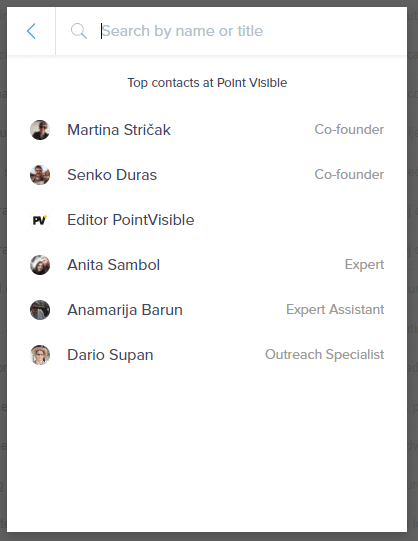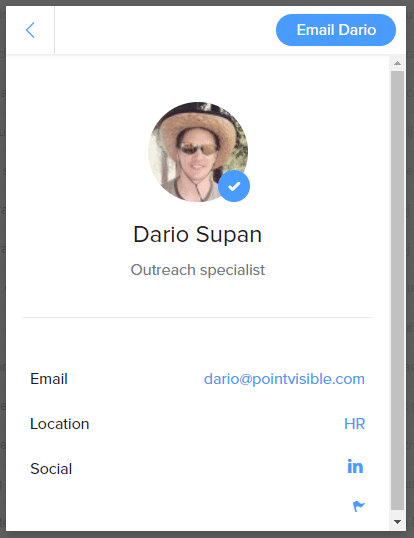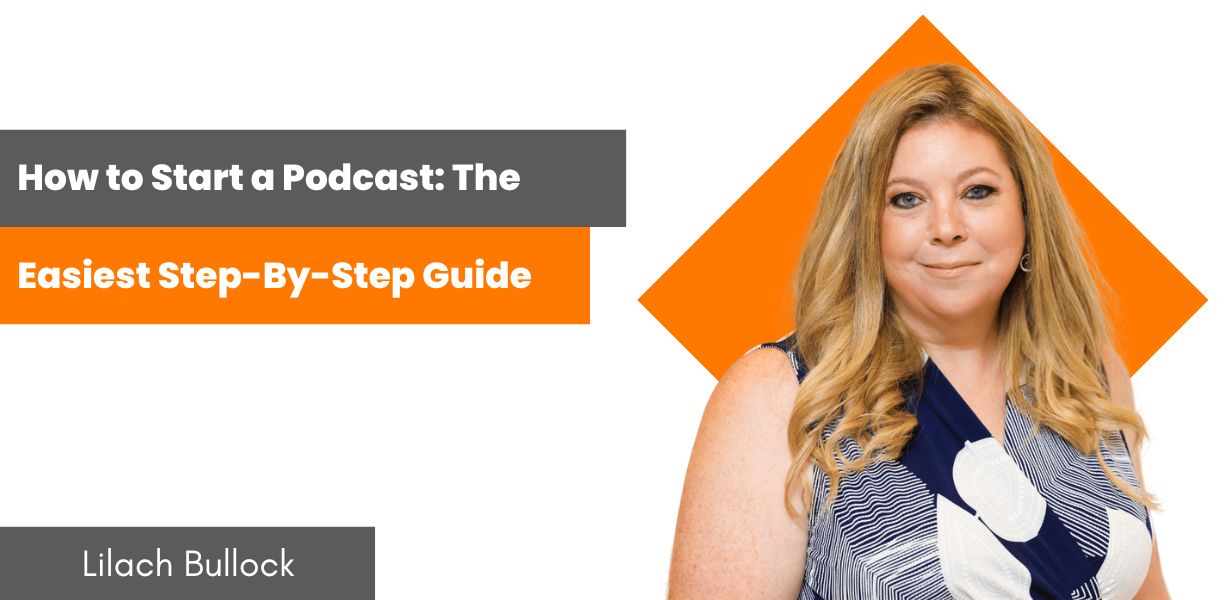Follow Lilach

Time To Stop With These 10 Things In Your Outreach Campaigns
Do you ever wonder why are the outreach campaigns still so challenging even when you’re creating above-average content in terms of quality? What outreach campaigns mistakes are you making?
The answer is quite simple. One of the main reasons you always have to be on top of your outreach game are all the marketers and bloggers that are doing it wrong.
Think about it. If you’re an editor that has to deal with tons of spam, poorly written pitches and unfulfilled promises on a daily basis, you too would be suspicious about your future dealings with anyone who offers unsolicited content.
Editors on top blogs get hundreds of pitches a week and they can quickly spot any potential problems they could have with you just by looking at your pitch.
It doesn’t matter if you’re enquiring about an infographic share, guest posting, promoting a piece of content from your blog or any other type of outreach effort – if you decide to spend time on it, you better do it right!
To help you craft pitches that won’t raise any suspicions and to increase the overall success of your outreach campaigns, let’s look at some common outreach mistakes and how to put them to rest.
Time To Stop With These 10 Things In Your Outreach Campaigns: Outreach Campaigns Mistakes
1. Sending Generic/Unpersonalized/Automatic Pitches
It is a bit sad that this point had to make its way onto this list. Since you can find it in almost any other article that tackles these issues, one would think that people would start taking notice and stop spamming blog owners with generic emails.
Recently, we opened our doors to guest posters and had the “privilege” to witness this problem first-hand.
The thing is, when you’re in this business for a while, you can spot the template from a mile away. It is immediately obvious this is a template used for mass outreach that has one personalized field where the scraper picks up your website link and fills in the template.
Inherently, there is nothing wrong with using templates. Any larger outreach campaign is nearly impossible to lead without some automation but doesn’t mean you can write one generic message that will cover everyone you’re reaching out to. And when you try to do exactly that, it’s pretty easy to spot because you have to be really general and unspecific.
To personalize your pitch, you can:
- Call the person you’re reaching out to by name (if you have that information available)
- Mention a post you’ve read on their blog
- Refer to their post you’ve read somewhere else
- Explain how you found their blog
- Use any detail you find about the website or editor that will show them you spent more than 15 seconds exploring their content/website
- If you are using templates, make sure to leave some personalized areas you can fill out with the info above, before you send that pitch away
[clickToTweet tweet=”Time To Stop With These 10 Things In Your #Outreach Campaigns: guest post on @lilachbullock” quote=”Time To Stop With These 10 Things In Your #Outreach Campaigns: guest post on @lilachbullock”]
Seems like a lot of work?
Because it is. If you ever wondered why is the price for guest posts in hundreds of dollars, this is one of the main reasons why. If you want to do the outreach to the best of your abilities, this is a time-consuming process. It isn’t called manual outreach for nothing.
But hey, you can always throw some mud at the wall and hope it sticks somewhere. The results will reflect the effort you put in.
2. Reaching out to the wrong person
In marketing, blogging and SaaS niches, top spots for reputable sources of information in their respective fields are held by blogs tied to a service or a product. Semrush and HubSpot are probably one of the best examples.
You can use many different tools and techniques to find contact information but, since they have so many employees, it gets hard to pinpoint the right person to reach out to.
If you think “well this is not that important, they can always forward my pitch to the right place” then you’re not seeing the big picture.
While it is true that, from time to time, you’ll get lucky and the sales manager you reached out to will get your pitch in front of the right eyes, this is more an exception than a rule.
By pitching to the wrong person you:
- Effectively slow down your whole outreach process
- Can leave the impression you are spamming them
- Risk losing the opportunity if your email isn’t forwarded to the right place
- If they have guest post guidelines with contact info, this is a sure-fire way to know you didn’t read them at all
One tool that we found to be very useful when trying to find the right person to reach out to is Clearbit Connect. It is an addon you can connect with your Gmail account. What is so neat about it is that it shows you job description of the person you are trying to contact.
3. Wrong pitch tone accompanied with poor structure & spelling mistakes
Are you reaching out to a gaming site, a serious blog that deals with health-related issues, or a content marketing blog?
You can’t have the same tone of voice for every niche so be careful if you plan to reuse old templates, even if they proved to be successful in another niche.
The importance of proper email structure and the absence of spelling mistakes should be self-explanatory.
R.I.P. English
If you can’t proofread the pitch, how can someone trust you that your article will be any different?
Also, if you look at the example above, you can quickly notice that formatting went all crazy. The editor shouldn’t have to guess where suggested topic title name ends and where the numbering starts.
One spelling mistake isn’t the end of the world but with any additional errors, your first impression gets exponentially worse. With tools like Grammarly around, it is just sad to lose an opportunity in this manner.
[clickToTweet tweet=”Time To Stop With These 10 Things In Your #Outreach Campaigns: guest post on @lilachbullock” quote=”Time To Stop With These 10 Things In Your #Outreach Campaigns: guest post on @lilachbullock”]
4. Not respecting the guidelines
Arguably, the bigger problem here is that people don’t even bother to look for the guidelines. You can’t follow the rules you don’t know exist in the first place.
Guidelines are there for a reason. Their purpose is to streamline the pitching/submission process and to answer some common questions you may have regarding the same process.
They are also a great indicator if you’re able to follow some basic instructions.
If you like to often skip this step, look at it this way – detailed guidelines will give you some valuable insights you can use to evaluate if the site is even worth your time.
Social media following, linking policy, waiting times are things you ought to know anyway before you reach out. May as well read the rest of the guidelines while you’re there.
5. Not following up
In the world of multitasking and deadlines, replying to your pitch is rarely the first thing on anyone’s to-do list.
Inboxes get crammed up very quickly so following up is a necessity. However, you should pay attention to several things.
According to our internal data, the optimal number of days you should wait before you follow-up is 3 to 4 days, if not stated otherwise in their guidelines. Depending on the project, follow-ups bring us 40-60% of all replies.
Are you’re really fine with losing half of your potential opportunities by failing to follow-up?
What’s also important to note is that you should keep your follow-ups short and concise. If anyone is interested in more info, they will ask you directly or look for your first message.
If you found multiple viable contacts, you should stick to a single follow-up so you go through the contact list in a reasonable amount of time. On the other hand, if you only found a single contact, you may try to follow-up twice, nothing much to lose here.
Anything more than 2 follow-ups could seem like you’re spamming them or that you’re desperate. It’s up to you to decide if that’s worth the risk.
6. Poorly matching your content suggestions with their audience & style
Properly matching your content suggestions with their needs is the single most important thing you need to get right.
Nobody is going to take your ideas into consideration if you offer them content that isn’t aligned with what their target audience wants and expects.
The saving grace here is the editors that take their time to let you know your content isn’t aligned with their audience. If you have a low response rate or you get a lot of these “not aligned” replies, you should spend more time researching the blogs you pitch to.
[clickToTweet tweet=”Time To Stop With These 10 Things In Your #Outreach Campaigns: guest post on @lilachbullock” quote=”Time To Stop With These 10 Things In Your #Outreach Campaigns: guest post on @lilachbullock”]
It is the only way to get a better sense of what they like to publish. And this also gives you a chance to see what they published in the past so you don’t suggest a topic that overlaps with something they already have sufficiently covered.
Another thing marketers are known to get wrong is the content style. If the blog features how-to guides, don’t offer it a list-type article and vice versa.
If the blog covers “top 5” or “top 10” lists, don’t go with “8 Best Tools For…”.
Do the groundwork and adjust your content suggestions. It will significantly improve the success rate of your outreach campaigns.
7. Asking editors to do the work for you
Not so long ago, we got a pitch that was rather good but had one big flaw. They told us what areas they can cover and asked us what should they write about.
It is YOUR job to suggest a topic. If the editor wants to cover anything that badly, he will write it himself or give it to one of his writers. On those rare occasions when you seem suitable to cover an area or a topic they need, they will surely reach back to you with a proposal. You have a lot to lose and little to gain so try to avoid this approach.
A similar thing goes with getting the article properly formatted, sending pictures separately that are already optimized for the web, adding links to their blog, sending additional suggestions and so on. Bloggers will appreciate getting a clean work and you’ll increase the chance of getting your content published.
8. Too much “You”, too little “Them”
Think of this as your first date. If you’re only going to talk about yourself, there isn’t going to be a second one.
No matter how great your content is (or you think it is), excessive bragging will just have a countereffect. Let your work speak for you. While you should mention your references and what you bring to the table, don’t present yourself as a gift from the universe itself.
Mention why are you reaching out to them and why do you think their blog is a perfect place to feature what you offer. You can also indicate if your “brands” have something in common and how this is an opportunity that brings value to both sides.
Choose your words carefully as the line between being informative and being pushy is rather thin.
9. Not using the tools at your disposal
Today, there is an app for everything. Blogger outreach process is definitely not an exception.
Don’t be stubborn. Look around to see what will make your life easier. There are a lot of small add-ons like the previously mentioned Clearbit but if you’re looking at any bigger outreach effort, you should probably look at some of the popular outreach tools. Just be sure to find the outreach tool that is most suitable for your workflow. Most of them have trial versions you can use to take them out for a test drive.
They will help you find more blogs, search for additional contacts, suggest different templates and let you measure your success. It is hard to improve if you don’t know which part of your outreach process is dragging your success rate down the drain.
This is an investment that will quickly pay off just by the sheer amount of time you’ll save throughout the whole outreach process.
[clickToTweet tweet=”Time To Stop With These 10 Things In Your #Outreach Campaigns: guest post on @lilachbullock” quote=”Time To Stop With These 10 Things In Your #Outreach Campaigns: guest post on @lilachbullock”]
10. Not taking advantage of your previous work
There are a few different ways to leverage your experience to your advantage.
As a marketer, having previous experience in any niche allows you to jump-start current projects. You know some blogs that accept guest posts, you have contacts from the right people and you know their content requirements. With proper content matching, you shouldn’t have any problems to get a first few posts published.
You can also use your experience to adjust outreach templates and language style to the niche you’re currently working in.
Now onto the less obvious stuff.
When you’re working on a project for a longer period of time, you should have a feel for what works best. What kind of topics attract more interest, how promotional you can get while creating the content, do you need to pitch descriptions/outlines alongside your topic suggestions and so on.
You shouldn’t stop there. Did you get published on a high-authority site in your niche? Do you have a high-quality long-form article on your blog? Use it in your pitch as an example of your previous work. It builds trust and authority which means that the editor will be more inclined to give you a chance.
Effort equals results: outreach campaigns mistakes
When it is all said and done, the equation is simple – effort you put in your outreach campaigns correlates with the output you’re going to get.
If you want to do the whole process properly, you’re going to have to invest a lot of time into research, add a little bit of imagination and stay on your toes to adjust any element of the process that proves ineffective.
Avoiding the outreach campaigns mistakes covered here should keep you on the right track.
 Dario is an outreach specialist at Point Visible. Except for taking care of blogger outreach projects s and creating helpful blog posts, his interests are related to graphic and web design. He occasionally throws in an On-page SEO project, just for good measure.
Dario is an outreach specialist at Point Visible. Except for taking care of blogger outreach projects s and creating helpful blog posts, his interests are related to graphic and web design. He occasionally throws in an On-page SEO project, just for good measure.

Follow Lilach



















